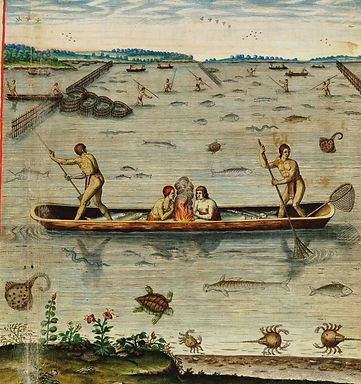

Heritage in a Shell

"The story of oysters on Virginia’s Eastern Shore is as old as the tide itself."
For thousands of years, indigenous peoples along the Chesapeake Bay and barrier islands relied on oysters as a vital food source, leaving behind ancient shell middens that still mark the land today. These early communities understood the abundance and rhythm of the estuarine waters, harvesting oysters by hand from wild reefs that thrived in the clean, nutrient-rich waters of the Atlantic coast.
When European settlers arrived in the 1600s, they quickly embraced the oyster as a staple, recognizing its value not just for sustenance, but for trade and commerce as well.
By the 19th century, oysters had become big business. The Eastern Shore, with its remote marshlands and pristine inlets, was at the heart of the booming oyster industry.
Towns like Wachapreague, Chincoteague, and Cape Charles were shaped by the tides and the labor of watermen who worked the bay with tongs and dredges, hauling in oysters by the bushel.
Railroads were built to carry them north to cities like Baltimore, Philadelphia, and New York, where Virginia oysters were prized for their flavor.
Families built their lives around the oyster season, passing down the traditions of harvesting, shucking, and selling from one generation to the next.


In recent decades, oyster farming has become the key to both restoring the species and sustaining the industry. Today’s oyster growers use scientifically informed methods to cultivate oysters in environmentally responsible ways, allowing them to mature in floating cages or on the bay floor.
These practices not only ensure a consistent supply of high-quality oysters but also benefit the environment — oysters naturally filter water, reduce nitrogen levels, and create habitats for other marine life. The Eastern Shore remains one of the leading oyster-producing regions in the U.S., blending a deep-rooted heritage with innovative, sustainable practices for future generations.